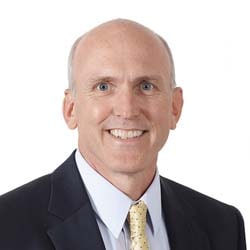Growing up in Iowa, I naturally was a fan of the 1989 movie, Field of Dreams. The movie tells the story of an Iowa farmer that plows up his cornfield to make a baseball field. There are many quotable lines in the movie including the ghostly voice stating, “If you build it, he will come.”
A very similar question can be asked today of our communities that are vying for economic opportunities: If they come, will you build it?
Building, rebuilding, and expanding public infrastructure is a critical step for most communities that are looking to grow by attracting and supporting business and residential development. Public infrastructure and utilities are an expensive, often overlooked element in community and economic development strategies. However, without reliable and sufficient infrastructure, capitalizing on economic growth opportunities may be difficult.
Funding
Communities utilize a variety of tools to fund infrastructure improvements. There are local financing tools and special taxing districts that can fund these improvements using bond proceeds, local tax revenue, and development fees. There are also existing state and federal programs that can fund improvements for qualified projects, such as:
- The Housing and Urban Development’s Community Development Block Grant Program helps support economic opportunities for low- to moderate-income communities and individuals.
- The U.S. Department of Commerce-Economic Development Administration programs provide infrastructure funding to support job creation, private investment, and recovery and resilience.
New programs and funding opportunities are often created by state and federal legislation in response to economic disruption, disasters, or changes in political leadership that can provide infrastructure funding support.
Key steps for moving forward
How do communities begin to tackle this arduous issue of infrastructure financing and development? Here are some best practices that can be replicated:
- Communities and other development organizations should maintain an up-to-date list of key infrastructure needs so they are prepared to advance when funding opportunities become available.
- Communities should commission conceptual studies or preliminary engineering reports to outline the project and estimate project costs.
- Communities should develop funding strategies to achieve the project outcomes by leveraging local, state, and federal resources. Many state and federal programs will only provide financial support if local resources are maximized, and they prohibit supplanting of other funding resources.
- Communities should closely monitor available state and federal programs and resources for new programs and funding allocations that they can compete for, or engage a trusted advisor to keep an eye on these opportunities.
Investing in infrastructure improvements doesn’t have to be a chicken and an egg scenario arguing over which must come first — the jobs to support the infrastructure investment, or the infrastructure investment to support job creation. These elements can occur concurrently with the right attitude of cooperation and collaboration.
Case in point
A rural Missouri community was competing for a manufacturing facility for a global company. The project would create nearly 100 jobs for the small town and invest more than $100M in plant and equipment. However, the City had to provide a bean field, a can-do attitude, and a commitment to work together to build a strong foundation for economic growth.
The City didn’t have to face this challenge alone. The professionals at MarksNelson helped the City secure grant funding from federal, state, and local agencies that provided nearly $10 million to build critical public infrastructure elements to support this project including roadway improvements, a rail spur, a water tower and well, and extension of sanitary sewers. These improvements not only serve this company, but they have also provided opportunities for the community to attract even more business.
The Location Strategies team at MarksNelson can help you develop and implement strategies that will give you opportunities to build the infrastructure so growth will come. Reach out to us today.


